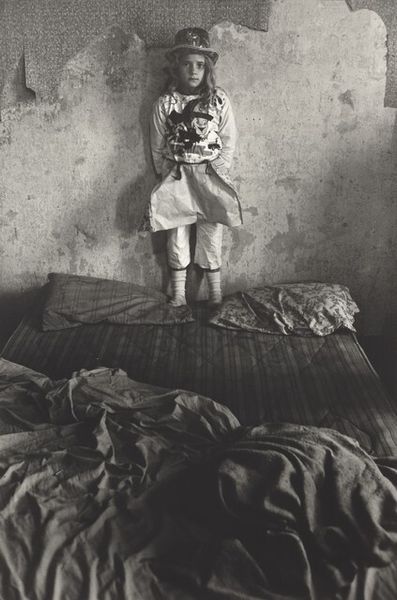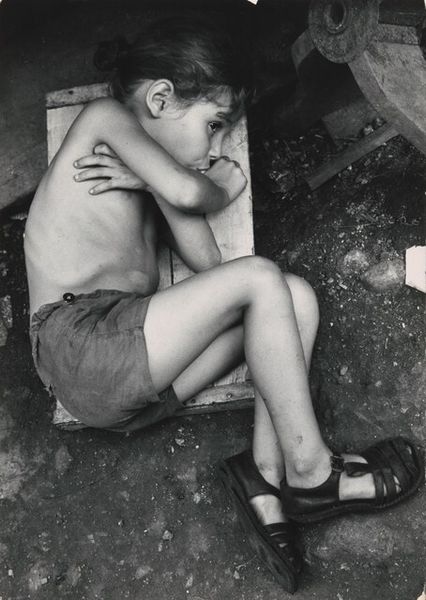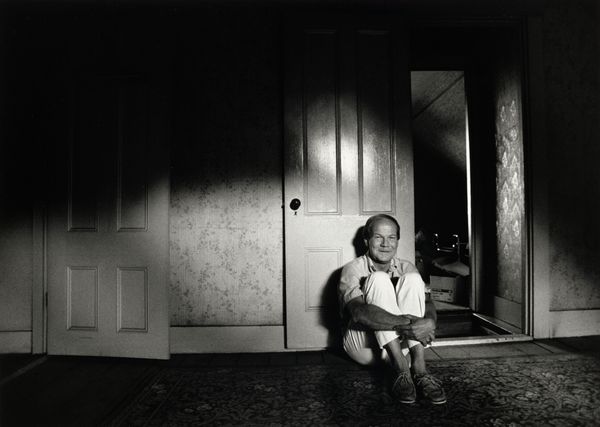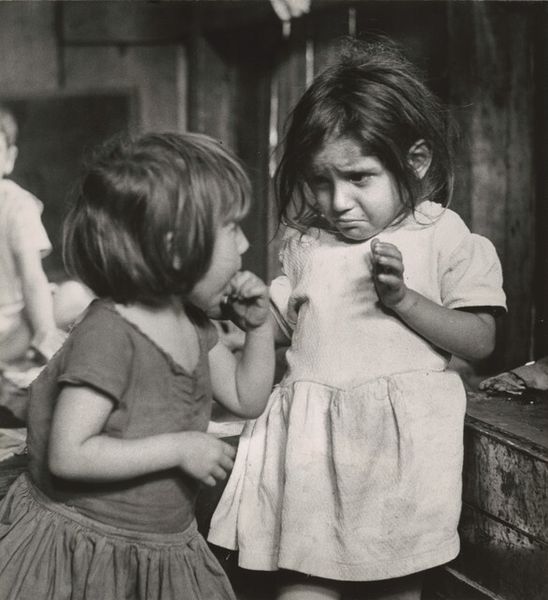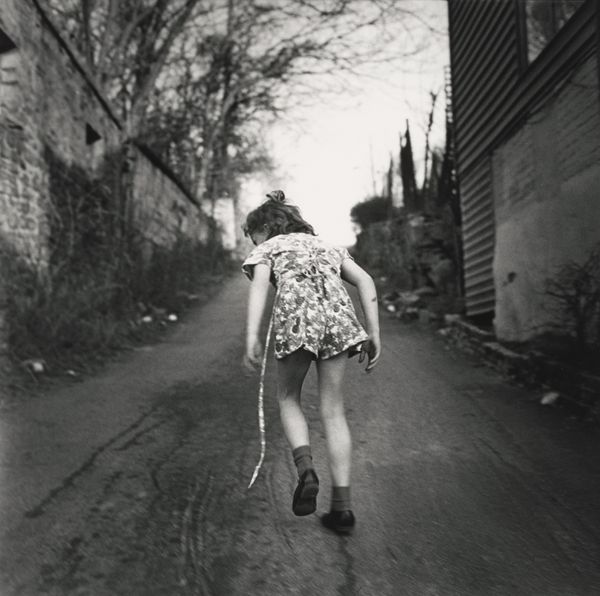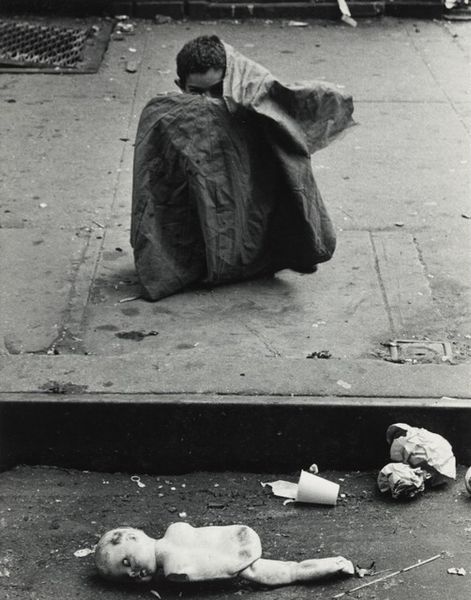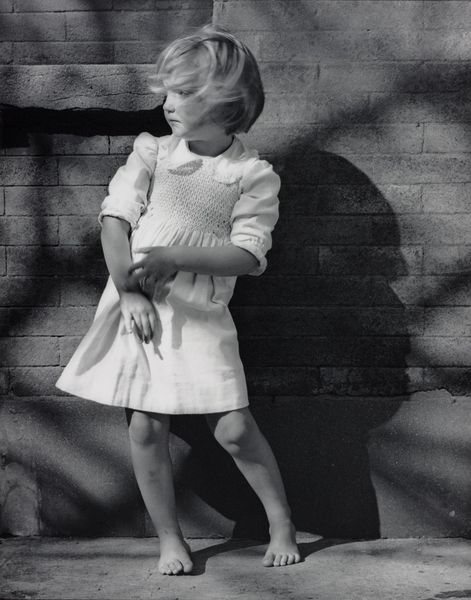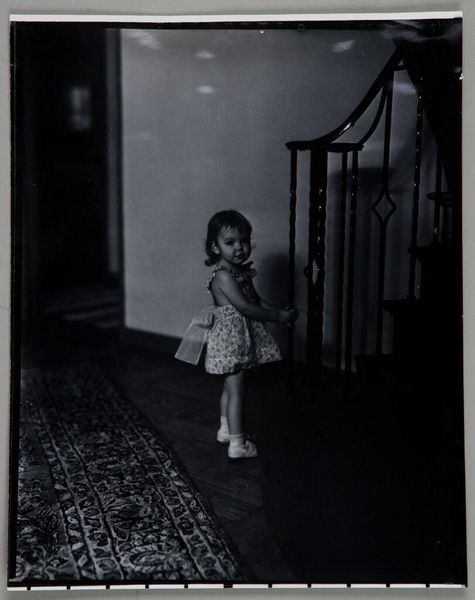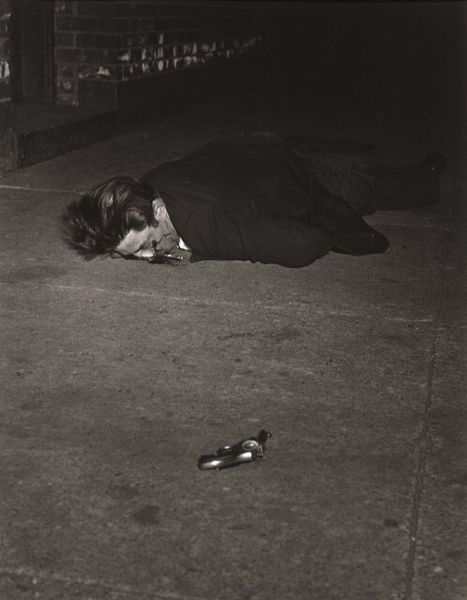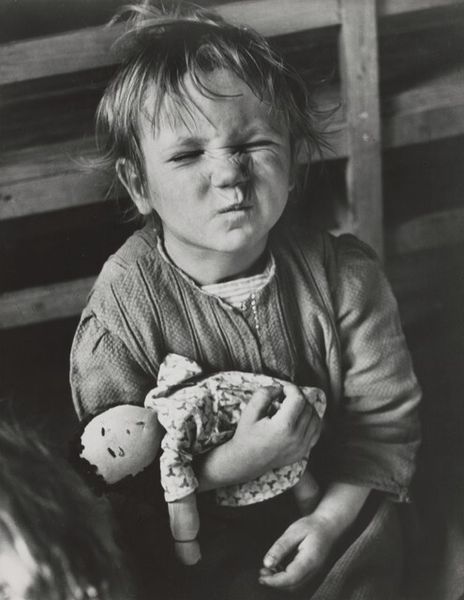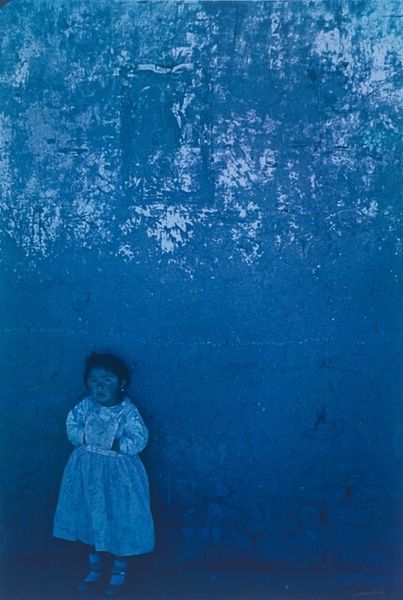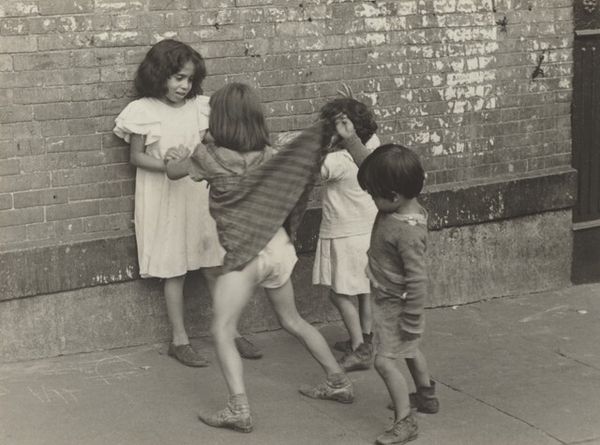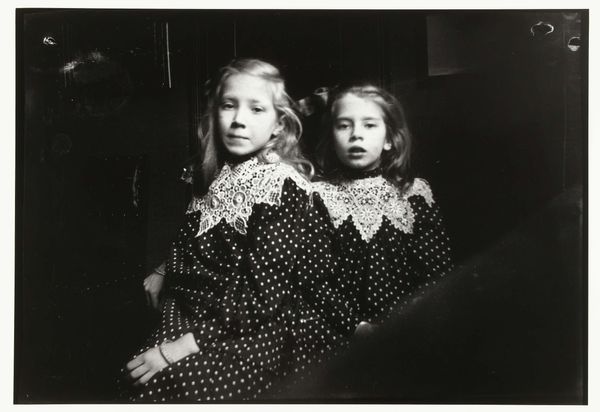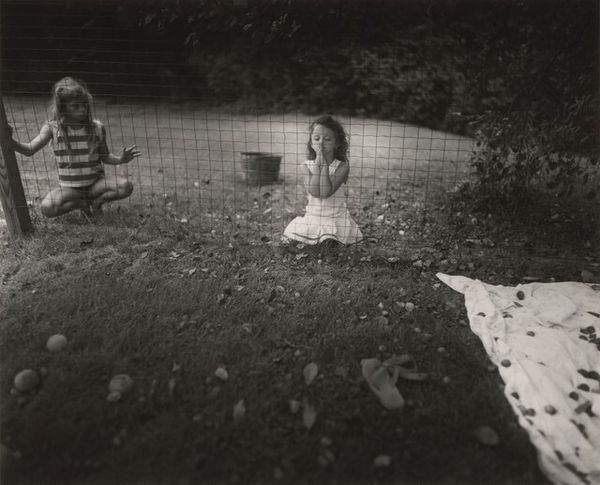
Dimensions: image: 25.2 × 18.5 cm (9 15/16 × 7 5/16 in.)
Copyright: National Gallery of Art: CC0 1.0
Editor: We're looking at "Punished, Paris," a gelatin-silver print from the 1930s. It features a doll tucked in the corner, and honestly, it's kind of unsettling. The composition and the monochrome palette lend this sense of abandonment and, as the title suggests, punishment. What's your read on it? Curator: The unsettling feeling is exactly what arrests the viewer. Considering the socio-political climate of the 1930s, one can see this discarded doll as a metaphor for the displaced and forgotten. The formal elements amplify this; the tight corner, the doll's downward gaze, the very texture of the print - all create a feeling of confinement and neglect. Do you think the title dictates our understanding? Editor: It's hard not to see it through that lens. But it could be interpreted in multiple ways even without the title. It just evokes a visceral response to ideas of damaged childhood, wouldn't you agree? Curator: Absolutely. The doll, typically a symbol of innocence and play, is here presented in a state of disrepair. It could be seen as a commentary on the societal ills that rob children of their innocence. Photography in this era became a powerful tool for social commentary, often showcasing the gritty realities of the Depression. This image resonates within that movement. It is less about individual sentiment and more about a pervasive social ill. Does understanding that background alter how you interpret it? Editor: It really enriches it! I see the doll not just as a discarded toy but as representative of larger societal problems. Thanks for pointing out how deeply entwined the photograph is with the historical moment. Curator: My pleasure. And understanding the social role art can play makes our viewing all the more impactful.
Comments
No comments
Be the first to comment and join the conversation on the ultimate creative platform.
